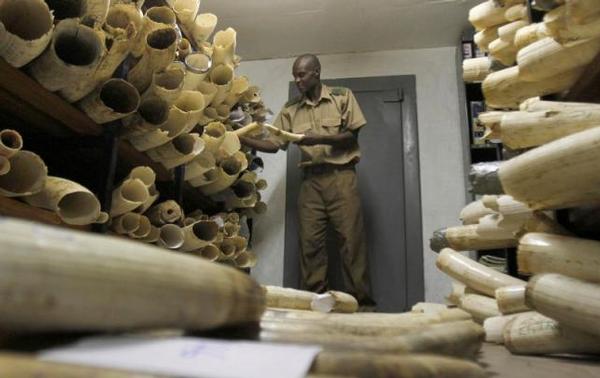
Zimbabwe lobbies neighbors on ivory trade, will not burn stocks

(Photo: Philimon Bulawayo)
Zimbabwe is seeking support from its neighbors to be allowed to engage in international trade in ivory and will not burn its 70 tonnes of ivory stocks as Kenya did last month, the environment minister said on Wednesday.
Zimbabwe and Namibia are bidding to open up international trade in elephant ivory, against initiatives led by Kenya for a complete global ban.
Oppah Muchinguri-Kashiri told diplomats from the Southern African Development Community that Zimbabwe was counting on their support at the next U.N. Convention on International Trade in Endangered Species (CITES) meeting in September.
Muchinguri said banning trade in ivory would not stop poaching and gave the example of how the rhino population remained under threat 40 years after trading in the rhino horn was outlawed by CITES.
“There is no tangible evidence that trade bans have ever saved a species from extinction,” Muchinguri said. “It is imperative for our regional economy that SADC countries unite in defending our right to sustainably use our natural resources.”
Muchinguri said plans by the European Union to ban hunting trophies from Africa, as the United States did after the killing of Cecil the lion last year, would cause hunting revenues to fall and push people living near wildlife to resort to poaching.
Cash-strapped Zimbabwe says trade is the only way to pay for the costs of protecting its 83,000 elephants. Zimbabwe says it has 70 tonnes of raw ivory in government storage estimated to be worth $35 million.
“To us, burning is not an option, we need the resources for sustainable wildlife conservation,” Muchinguri said.
On May 3, Zimbabwe put the wild animals in its national parks up for sale, saying it needed buyers to step in and save the beasts from a devastating drought.
Democratic Republic of Congo ambassador Mwampanga Mwana Nanga said his country supported Harare’s proposals and was talking to Zimbabwe on the possibility of importing wildlife, including elephants.
At a meeting of African countries in Uganda on Wednesday on protecting lions, delegates agreed that carefully controlled hunting could help keep the species from extinction.
The final communique from the meeting of 28 states convened by CITES said: “the benefits that trophy hunting, where it is based on scientifically established quotas … contributed to the conservation of lion populations.”
Trophy hunting has been in the global media since Cecil the lion was killed in Zimbabwe by an American dentist after it strayed outside Hwange National Park.
Lion numbers in Africa fell 43 percent between 1993 and 2014. But in Namibia, South Africa and Zimbabwe, which have regulated hunting industries, the lion populations have grown, according to the International Union for Conservation of Nature
(Source :02/06/2016 : Planet Ark :http://planetark.org/enviro-news/item/74518)
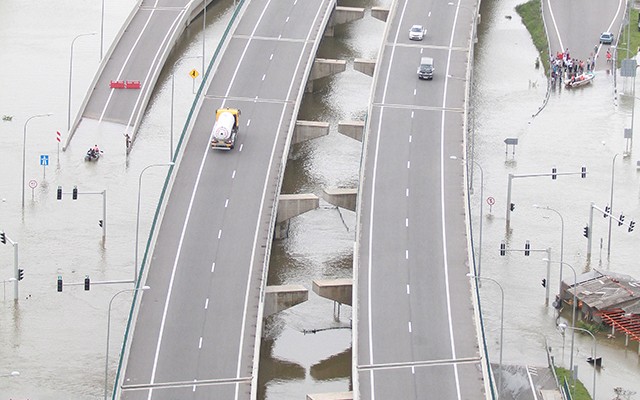
Delicate balance between Development and environment
According to government reports, recent floods and landslides in Sri Lanka have caused widespread disruption across country. Over 400,000 people have been displaced by floods, many casualties have been reported, and dozens are feared missing. Government puts this down to climate change. Such disasters were on the discussion table since 2010, and it was to be expected.
Center for environmental and Nature studies (CENS), Sri Lanka repeatedly reached out to the Environment Ministry and relevant authorities to put a stop to the destruction of environmentally-sensitive areas while implementing the National Physical Plan. But such entreaties were blatantly disregarded. This capitalist system is bent on increasing profit for the business community and decreases quality of life. This article elaborates on the reasons for flooding, landslides and other disasters.
The National Physical Plan to be implemented from 2011 to 2030 creates serious negative impacts on the ecosystems, so far untouched by development interventions. As a result of Colombo-Matara Highway, Sinharaja forest would be fragmented twice and 39 forests, including Sinharaja will be destroyed due to the proposed-development activities. Bibile, Nilgala area would have tremendous negative repercussions as a result of the proposed-hotel complexes.
Forests act as a barrier to soil erosions. Roots systems of these trees hold the soil layers together, protecting the earth from landslides. Destruction of forest cover increases soil erosion and risk of landslides. The percentage value of available forest area in 2012 is around 16.5 and by 2030, it is estimated that this will be further reduced to between 13 to 10 per cent with the decrease of forests due to the implementation of National Physical Plan, if the current government decides to go through with it. Ground water levels in the forests will deplete, and rivers will suffer from acute water shortage and go dry. It has been identified that 103 rivers will turn dry as in the case of Maguru Oya which is almost completely dried out.
There are riffles and pools midstream of every river. According to our research observations, riffles and pools have been covered by concrete buildings and roads. Micro-hydro projects and mega-development projects have blocked water-feeding channels, in Kelani River, for example. Riffles and pools are located in Kaluaggala, Avisswella, Waga and Hanwella areas. Colombo-Avissawella Road and many building were built, blocking and destroying riffles and pools. This is the cause for the many floods and landslides in many areas.
Flow of water in the riverbed should be natural. In the Sri Lankan scenario, downstream riverbeds are filled with sediments, hindering the natural flow of water. Sediment is transport to riverbeds from flood plains; erosion and construction around rivers increase flood and landslides. For example, due to construction of Pico hydro power on top of Laxapana waterfall and Kitulgala, Kelani River receives tons of sediments. This has resulted in increased incidence of flooding in Hanwella and Colombo areas. Most rivers receive lots of sediments from mega highway construction activities and other mega development sites.
In the process of building large cities, highways, airports, tourist hotels, a large number of minor tanks will disappear and tank cascades will be blocked disrupting natural water flow. As a result, droughts and floods will become a recurrent feature in Anuradapura, Polonnaruwa, Trincomalee and Kurunegala.
Many floodplains are being ravaged by mega development projects. For example, a highway was built destroying Muturajawela wetland and many other wetlands in the country. Before the highway was built, not a single incident of flooding was reported in Kaduwela and Ja-Ela areas. Encroachment of floodplain has caused massive disasters in the past. Many floodplains have been converted to build sites of homes, businesses and other urban development activities.
This is most evident in Kelani River, during rainy season when water level of Kelani River goes up flooding human settlements built in the floodplain.
The Mahaweli Development Plan which kicked off with the anticipation of tremendous development within a short period resulted in ecological disasters such as landslides, increased incidence of floods, human-elephant conflict, land fragmentation and loss of biodiversity. The country is still paying debts to international funding agencies that funded Mahaweli Accelerated Development Programme. This trend continues with the development activities proposed under the National Physical Plan.
In another example, many people die in the Meeriaybedda landslide in 2014. The cause of the landslide is believed to be the drilling and blasting method used for rock breaking and tunnel drilling of the Uma Oya project. The vibration caused by the process subjects the area to the inevitable risk of landslides in the future.
We have enough environmental laws to protect nature and prevent disasters, but all laws are under political and monetary influence. Funds for the destructive National Physical Plan are provided by funding agencies such as the World Bank and Asian Development Bank.
John Parkinson in his Book Confession of an Economic Hit Man recounts how countries like America believed in a rapid, tremendous development through and when they found that their developmental interventions failed one by one, they attempted to maintain their economy by exploiting other countries with high interest rates and conspiracies to topple governments acting against their policies and so-called development programmes.
In Parkinson’s view, the capitalist countries build hope in the minds of leaders in poor countries through their imaginary models for rapid economic development. One such example is Norochcholai Coal Power Project in Sri Lanka. The project has failed to provide any of the benefits promised at inception.
Parkinson further says that foreign companies provide loans through which developing countries can be caught in an everlasting debt trap. Capitalist countries make huge profits through interest charged for loans and exploitation of natural resources of the countries concerned. They are also concerned with appointing people who obey their policies and commands as the leaders of these countries.
Similar fate would befall Sri Lanka, if the current government is to follow through with the National Development Plan. Mega development does not sustain the world. Luxury apartments, highways, airports, megacities, supermarkets cannot be considered socio-economic indicators of a country. Though capitalist regimes unconditionally stand by the National Physical Plan, World Bank and Asian Development Bank agendas, they do not bother about the priorities of the vulnerable majority.
Source 30-05-2016 Nation( Sri Lanka http://nation.lk/online/2016/05/28/delicate-balance-between-development-and-environment.html
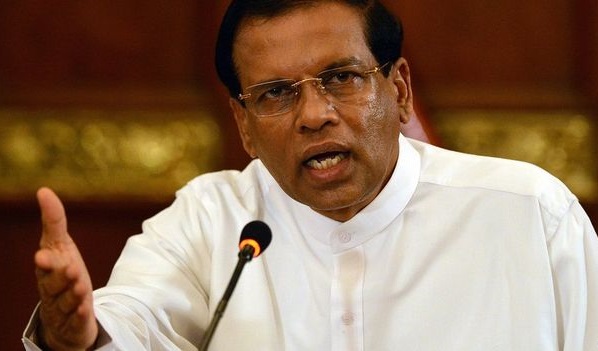
President Sirsena pledges to take strict action against environmental destruction
President Maithripala Sirisena while addressing an event held in Polonnaruwa today, stated that if any environmental harm is reported in a certain area, strict action will be taken against the responsible government official in the area.
The event was held at the Sevamuktha Kandavura Maha Vidyalaya in Polonnaruwa this morning to declare the National Environment Week, parallel to World Environment Day which falls on the 5th of June.
President Sirisena planted a Na sapling at the school premises to mark the Tree Planting Programe implemented in line with the National Environment Week. Gold medals were awarded for the Environmental Pioneer Brigade in the Dimbulagala area under the auspices of the President.
The President in his address pointed out that the Kelani River basin in the Colombo District lies completely destroyed today and around 150 meters on either side of the banks of the Kelani River are full of constructions and all reserves which belong to this river are destroyed.
He further added that buildings have been constructed over the canals, drains and waterways in Colombo and especially Kolonnawa and it is the politicians, state officials and everyone of their respective eras who should be held responsible for this and if any unauthorized buildings or environmental pollution happens in a way which damages the canal and river preservation in any area, strict action will be taken against the responsible government officials in these areas.
(Source : 30-05-2016: News First (Sri Lanka http://newsfirst.lk/english/2016/05/president-sirsena-pledges-take-strict-action-environmental-destruction/137861)
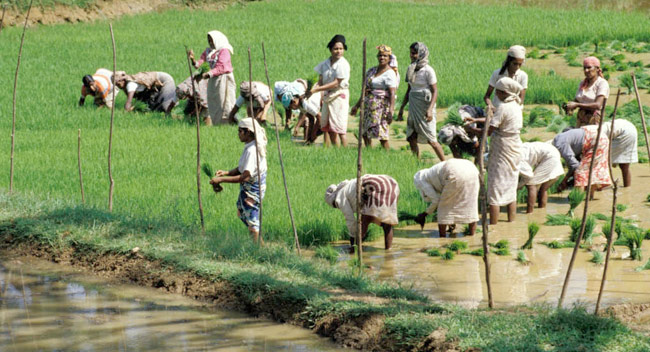
Why we should promote organic agriculture
Whole world is gradually getting under the control of profit-oriented multi-national companies. These so-called wars between West and Middle East countries are their income. Companies who make fighter jets, dig earth for fuels, build ships to transport soldiers, food supplies in war field are some of the well-known businesses. Even donating legs to soldiers who lost their limbs in wars could be their business in a form of donation to evade taxes. All these companies are fully equipped with highly qualified professionals educated from universities specialized in required expertise. It is the real scenario behind this so-called world politics.
Under this scenario, just imagine what would happen if two companies specialized in agro chemicals and medical drugs and equipment (such as kidney transplant machines) start a joint venture. Even funding required for producing expertise in the form of PhDs etc. could be there investment in a form of donation to universities. Though it may not yet has happened, there is every possibility in a profit-oriented world.
Taxing consumers
Chemical based agriculture started after World War II. Excess Urea available mainly in bomb making factories was sent to countries such as Sri Lanka as free aids.
In 70s Urea was given to farmers free of charge initially and later for cash. Ultimate result was never ending dependency on fertilizer subsidies in order to economically justify agriculture for farmers. These subsidies are recovered by taxing consumers. It is kind of vicious circle energized by never ending dependency on imported fertilizers.
Unless, we, as a nation equip ourselves for our basic need called hunger, what would happen to countries like Sri Lanka even when required resources are still available
Chemical based agriculture
Our resource is our organic fertilizer rich soil and rest of the eco system. Soil is a kind of organic agriculture factory. Earth worms and other fauna are the factory labourers. Application of chemical agriculture gradually paralyses this labour force and eventually completely vanished even extinct beyond recovery. Though some of our agriculture areas are already experiencing this pathetic stage to some extent, I think it is still recoverable. Unless we promote organic agriculture among farmers who are actually doing farming on the field, what is the long term solution Unless it is carefully managed, in my view, the dependency on chemical based agriculture is a suicidal mission for the whole nation, still not clearly noticed by us.
Getting out of this vicious circle is a gradual process. We are already addictively and unknowingly in it. In my view, Out of Box thinking is a must to find solutions to this dilemma. I hope this article would create a dialogue among those thinkers.
(Source : 30-05-2016 ( Daily News ( Sri Lanka ) http://www.dailynews.lk/?q=2016/05/30/features/83127)
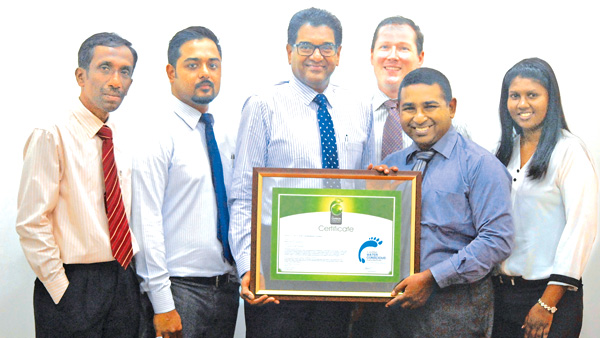
Hayleys Agriculture renews commitment to sustainability

Hayleys Agriculture Commercial Manager Ajitha Y Perera, Hayleys Agriculture Strategic Business Development Head Samudra Rajapakshe, Hayleys Agriculture Managing Director Rizvi Zaheed, Carbon Consulting Company Sustainable Development and Strategy Manager Glenn Sonntag, Carbon Consulting Company CEO Sanith De. S. Wijeyeratne, Carbon Consulting Company Sustainability Solutions Associate Shermila Weragoda.
HJS Condiments, part of the Hayleys Group, recently renewed its CarbonConscious and WaterConscious certifications for a second consecutive year.
The certifications were awarded by The Carbon Consulting Company (CCC) following the conduct of independent audits.CarbonConscious(r) and WaterConscious(r) are part of the proprietary Conscious(r) range of certification programmes developed by CCC following international standards and protocols for the measurement, management and mitigation and enhancement of environmental sustainability focus areas such as Carbon, Water, Waste and Biodiversity.
As per the guarantee given by HJS Condiments to be a more sustainable business entity, they have signed up for a three-year programme to frequently measure, manage and mitigate their environmental footprint.
In the past year, the company has successfully set up a customised framework, which includes separate carbon and water management plans and an in-house ‘Sustainability Team’ who are responsible for keeping consumption and wastage amounts in check at reduced levels. Hayleys Agriculture Managing Director, Rizvi Zaheed said that whilst the company seeks to grow its business portfolio in food and agriculture, this would be done in a completely sustainable manner in keeping with global best practices. HJS Condiments Director and CEO, Ananda Pathirage, said “We are happy with our progress so far under this three-year programme. In the past year alone, through mitigation opportunities identified from the audits, we have managed to achieve a reduction in Scope 1 emissions of up to 10%, and we plan to reduce our carbon and water footprints to a greater extent in the coming years that would no doubt benefit the triple bottom line.”
CCC CEO, Sanith de S. Wijeyeratne said: “Climate change is the single biggest threat facing our planet. In Sri Lanka we are noticing the effects of global warming in the form of adverse weather, which is wreaking havoc on our agricultural industry.
In this regard, I’m happy to report that leading industry players like HJS Condiments are taking a stand about their duty towards environmental sustainability. Let us hope that other organisations will take this to heart and follow in the path of companies like HJS, as we all strive to reduce our environmental footprint on Earth.”
(Source : 27-05-2016:Daily News ( Sri Lanka) : http://www.dailynews.lk/?q=2016/05/27/business/82917)
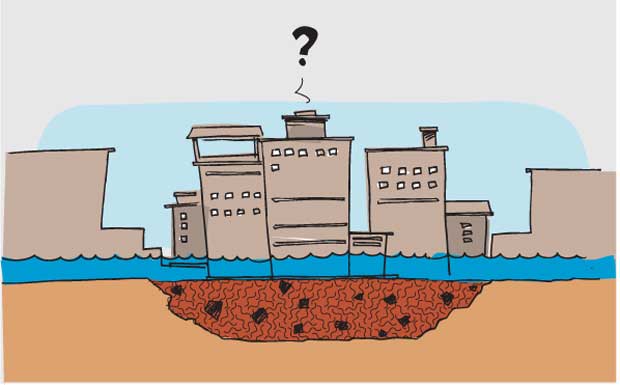
Don’t destroy our biological supermarkets

With the deluge continuing and hundreds of thousands of people seriously affected by the worst flood havoc in recent decades, we wish to focus attention today on how much the construction of housing schemes and other buildings on what were once wetlands or marshlands has contributed towards the calamity.
For instance in the suburbs of Colombo city, a wetland including an ancient stream was apparently bought at a lower price, covered up and luxury two storey houses built at a sale price of Rs. 20 million each. Last week the ground floors of most of those houses were covered by dirty or muddy flood water and the residents had to flee. Most of them are not likely to return. This is one of the many instances where houses or buildings in wetlands faced a catastrophe. Besides the take-over of wetlands, the Daily Mirror in its Editorial on Monday referred to the excessive or illegal rock blasting and sand mining which had been carried out on a large scale with political patronage for the last decade or more.
According to scientific analysts, when an area flooded with water, wetlands act like a giant sponge. This is because the living plants and even the dead plants can absorb the extra water. By doing this, wetlands also help slow down the movement of this water to surrounding areas where people may have houses. So, having wetlands in areas where there is regular flooding may save your houses.
Scientists say wetlands are important features in the landscape that provide numerous beneficial services for people, fish and wildlife. Some of these services, or functions, include protecting and improving water quality, providing fish and wildlife habitats, storing flood waters and maintaining surface water flow during dry seasons.
These valuable functions are the result of the rare natural characteristics of wetlands.Wetlands are among the most productive ecosystems in the world, comparable to rain forests and coral reefs. An immense variety of species of microbes, plants, insects, amphibians, reptiles, birds, fish and mammals can be part of a wetland ecosystem. Scientists say the complex, dynamic relationships among the organisms inhabiting the wetland environment are called food webs.
Wetlands can be thought of as “biological supermarkets.” They provide great volumes of food that attract many animal species. These animals use wetlands for part of or all of their life-cycle. Dead plant leaves and stems break down in the water to form small particles of organic material called “detritus.” This enriched material feeds many small aquatic insects, shellfish and small fish that are food for larger predatory fish, reptiles, amphibians, birds and mammals. All these are destroyed when apartment complexes or other building are constructed on wetlands. The Government must stop this now as part of Sri Lanka’s contribution to the battle against climate change.
The functions of a wetland and the values of these functions to humans depend on a complex set of relationships between the wetland and the other ecosystems in the watershed. A watershed is a geographic area in which water, sediments and dissolved materials drain from higher elevations to a common low-lying outlet or basin a point on a larger stream, lake underlying aquifer or estuary.
Scientists believe wetlands play an integral role in the ecology of the watershed. The combination of shallow water, high levels of nutrients and primary productivity is ideal for the development of organisms that form the base of the food web and feed many species of fish, amphibians, shellfish and insects. Many species of birds and mammals rely on wetlands for food, water and shelter, especially during migration and breeding.
Wetlands’ microbes, plants and wildlife are part of the global cycles for water, nitrogen and sulphur. Scientists now know that atmospheric maintenance may be an additional wetlands function. Wetlands store carbon within their plant communities and soil instead of releasing it to the atmosphere as carbon dioxide. Thus wetlands help to moderate global climate conditions.
Far from being useless, disease-ridden places, wetlands provide values that no other ecosystem can. These include natural water quality improvement, flood protection, shoreline erosion control, opportunities for recreation and aesthetic appreciation and natural products for our use at no cost. Protecting wetlands can protect our safety and welfare
(Source: 24 May 2016 Daily Mirror (Sri Lanka) : http://www.dailymirror.lk/109920/Don-t-destroy-our-biological-supermarkets-EDITORIAL#sthash.572Lkf4u.dpuf)
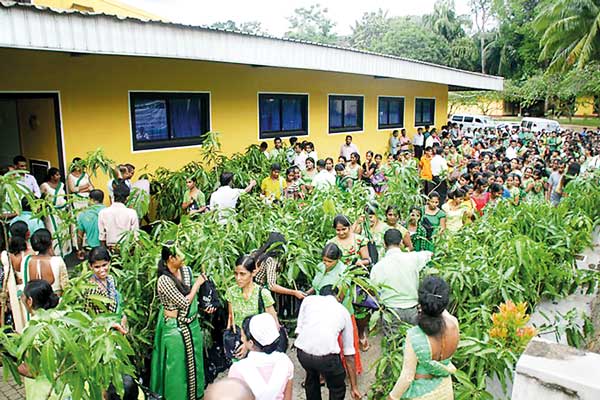
Kolonna garment factory distributes 800 mango plants to save environment
The Bernard Social Service Programme of the Bernard Boteju Garment Factory in Kolonna distributed 800 mango plants as a part of the campaign initiated by Moratuwa University Post Graduate Students’ Re-forest Sri Lanka Association to plant 84,000 trees.
More than 650 employees of the factory and the residents of the area received mango plants of the Karthakolomban variety. Factory administration advised the beneficiaries refrain from using synthetic fertilizer and to use only compost.
Kolonna Divisional Secretary S.M.D. Samarasekara said the community service of the Bernad Garment Factory set an example for the country. He pointed out that Kolonna area was facing a series of environmental issues.
Managing Director, Janak Boteju said he was impressed by the post graduate students’ campaign to plant 84,000 trees and implement the plant distribution programme which cost more than Rs.200,000 to the factory. He said he was planning to continue the programme in the years to come.

(Source : 23 May 2016 :Daily Mirror (Sri Lanka) http://www.dailymirror.lk/109848/Kolonna-garment-factory-distributes-mango-plants-to-save-environment)
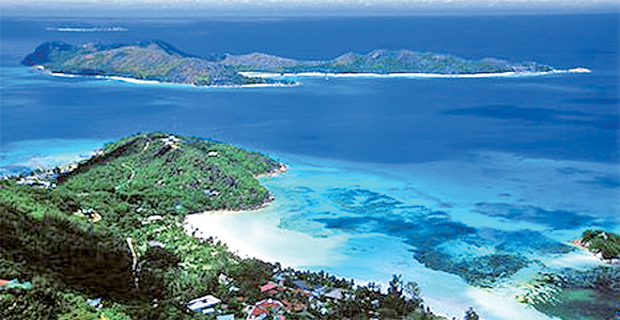
Seychelles – Sri Lanka : Meeting maritime conservation goals
Water is an important resource, key to development and life. Fresh water is being depleted or contaminated by pollution daily. Pollution and sediment due to land activities degrade coastal zones and marine areas, especially corals and fish. We need to work together with clear guidelines and monitoring programmes to make sure we are doing our best to safeguard water resources. The conference tries to address these issues and find financing, especially for developing countries. It is the first time that this conference is organised in our region. The organising body – Global Environment Facility (GEF) – is financing huge projects around the world
Although relations between Seychelles and Sri Lanka go back about 27 years, there was a boost in diplomatic relations in the recent past with the opening of Sri Lankan and Seychelles embassies in 2014. Apart from cooperation in tourism, the most notable area of cooperation is in the maritime sector. Seychelles employs a large number of teachers from Sri Lanka apart from other professionals and has a sizeable Sri Lankan community working in Seychelles.
Seychelles’ economy mostly depends on eco-tourism and gives emphasis to environmental conservation and energy security. Seychelles Environment, Energy and Climate Change Minister Didlier Dogley spoke in detail with the Daily News about his government’s efforts to achieve energy conservation goals, while he was here to participate in the Inter-Water Resource Management Conference organised by the Global Environment Facility at Negombo, recently.
Following are extracts of the interview:

Seychelles Environment, Energy and Climate Change Minister Didlier Dogley
|
Q: What are the key areas under discussion at the conference?
A: Over 300 participants in the International Water Resource Management Conference, working on trans-boundary and marine water issues, share experiences at this conference to find ways for upscale financing and technology to tackle problems internationally.
Water is an important resource, key to development and life. Fresh water is being depleted or contaminated by pollution daily. Pollution and sediment due to land activities degrade coastal zones and marine areas, especially corals and fish. We need to work together with clear guidelines and monitoring programmes to make sure we are doing our best to safeguard water resources. The conference tries to address these issues and find financing, especially for developing countries. It is the first time that this conference is organised in our region. The organising body – Global Environment Facility (GEF) – is financing huge projects around the world.
One of the areas that we talked about is the high seas, especially between Seychelles and Mauritius. GEF will be providing assistance to resolve issues in this regard.
Q: Should we be worried at the rate at which climate change is affecting the environment?
A: We should be very worried. There is massive coral bleaching all over India and it can be seen in the South of Sri Lanka as well. Even Australia’s Great Barrier Reef is affected. If we lose our corals, we lose our marine life and this will erode coastal areas. Seychelles depends a lot, not only on tourism but also on fisheries. Our tourism depends on the quality of the coastal environment. So it is important to bring measures to protect our marine environment.
Q: Would mega projects such as land reclamation have detrimental impacts on marine life?
A: I think the process of how you do it needs to be very clear. Even in the Seychelles we had to reclaim land. But the way you do it should be a well thought-out process.
There needs to be an Environment Impact Assessment and people should be consulted.
There should also be an Economic Benefit Analysis to see if the project makes sense in the long term. But I don’t think reclamation is a totally bad thing but it needs to be thought-out properly and objectively.
Q: What are the Seychelles’ key energy conservation programmes?
A: We are very much for energy conservation and sustainable development. We are doing a study right now, after the government took a decision to go for 100 percent renewable energy. At the moment, we depend on fossil fuels and we import heavy oils for electricity.
That costs us about 10 percent of our GDP of our annual national budget. If you take that money and invest in solar and wind energy, we can become totally independent. Countries have signed the Paris Agreement to reduce their carbon footprint. We have obligations to meet. First you need to achieve energy security, which means you don’t depend on fuel from outside.
Q: How are the Seychelles and Sri Lanka cooperating on conserving the marine environment?
A: We’ve got excellent working relations with the government of Sri Lanka. The Colombo International Nautical Engineering College (CINEC) – the marine campus – has signed an agreement with our maritime school whereby our sea-men and women are trained to be able to manage and tap into our marine environment.
Our fisheries industry boats are being built in Sri Lanka. On the maritime side, there is a lot of cooperation between Sri Lanka and Seychelles.
Q: What are the best practices adopted by Seychelles for waste management and protecting bio-diversity?
A: We are concerned about bio-diversity. We have protected areas. It has a return for us since it can turn into eco-tourism magnets. We have an extensive protected area network and are investing in eco-tourism. We understand that when the environment is healthy, it can better withstand impacts such as climate change. We have been investing a lot on sewer management, the sea and rivers meet the required standards. We are working hard to recycle as much as possible. We have zero-waste targets. Waste is also collected and exported to India and China where they are recycled as we can’t recycle in Seychelles as our volume is too small. We are also working on recycling 50 percent of our organic waste to turn it into bio-gas to produce energy.
Q: There was talk in the recent past about Sri Lankan government plans to close its High Commission in Seychelles, established during the past government. How would this have impacted on relations between the two countries?
A: I can certainly speak on behalf of our side. We have an embassy in Colombo established about three years ago. We saw the potential of working together with Sri Lanka. In the past, we always turned to Sri Lanka. When we had a shortage of teachers, we asked Sri Lanka to help us out. Today, there are plenty of Sri Lankans working in Seychelles in various sectors such as education, engineering, tourism etc.
We have a new vision of a ‘Blue Economy’ to tap into sustainability in marine sectors. We believe there is a lot we can learn from Sri Lanka in the marine sector. This is why the government established an embassy here. We don’t have a lot of embassies in the region. We have one in India, one in China and one in Colombo. So the decision to open one here speaks volumes.
We want to align ourselves with Sri Lanka in some of the sectors. We believe in building cooperation between our two countries. This is why we opened an embassy and will keep it open as long as we can. In the past, developing countries always looked towards developed countries. But some of the solutions were not there. We can cooperate in the South between each other, because certain countries have made progress in one direction, while others in another direction depending on policies and interests. So it makes more sense for South-South cooperation. For us, Sri Lanka presents us with certain opportunities which we would like to pursue.
Q: How is Seychelles cooperating with Sri Lanka in Sri Lankan government investigations into fraud and corruption, especially with regard to offshore bank accounts in Seychelles?
A: Seychelles is already cooperating with the Sri Lankan government through the Finance Investigation Unit in Seychelles with regard to investigation into any fraud and corruption. Seychelles has signed the Organisation for Economic Cooperation and Development (OECD) guidelines for offshore banking.
We keep offshore dealings transparent. All information on transactions can be inspected and checked by authorised bodies.
For each account that is opened in Seychelles, owners have to be declared, unlike earlier. Every year, all jurisdictions are reviewed. If you look up the internet, you will see that Seychelles is one of the countries that is clean. If in doubt, authorised bodies can check transactions after a formal request.
The Seychelles government has been working with the Panama jurisdiction and there is definitely interest in the offshore banking system. We’ve been following all the international rules, making sure that our systems are clean. We have made sure that we are not allowing the wrong people into our country. So if there is any investigation, Seychelles will cooperate as long as it is reciprocal on both sides.
Source:19 May 2016 Daily News (Sri Lanka)
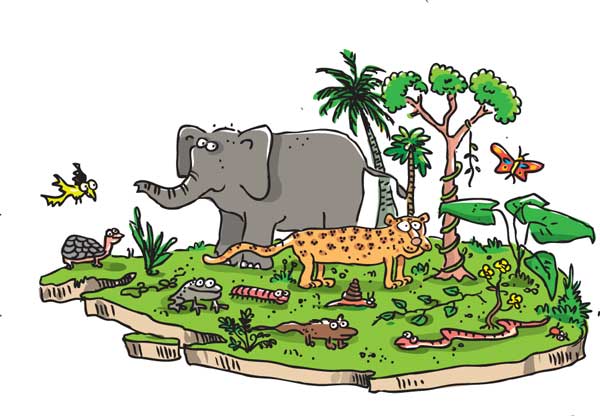
Let us protect our biodiversity
On Sunday May 22, the international community marks an important day but unfortunately not many people are aware of its deep significance. The United Nations has proclaimed May 22 as the International Day for Biological Diversity (IDB) to increase understanding and awareness of biodiversity issues. In December 2000, the UN General Assembly adopted May 22 as IDB, to mark the adoption of the text of the Convention held on May 22, 1992 by the Nairobi Final Act of the Conference.
This year’s theme is, ‘Mainstreaming Biodiversity; Sustaining People and their Livelihoods.’ For those who do not know or do not care, Biological diversity or biodiversity is the term given to the variety of life on Earth. It is the variety within and among all species of plants, animals and micro-organisms and the ecosystems within which they live and interact. Biodiversity comprises the millions of different species that live on our planet and the genetic differences within the species. It also refers to the multitude of different ecosystems in which species form unique communities, interacting with one another and the air, water and soil.
Biodiversity is explored at three levels: genetic diversity, species diversity and ecosystem diversity. According to science journals, Human alteration of the global environment has triggered the sixth major extinction event in the history of life and caused widespread changes in the global distribution of organisms. These changes in biodiversity alter ecosystem processes and change the resilience of ecosystems to environmental change. This has profound consequences for services that humans derive from ecosystems. The large ecological and societal consequences of changing biodiversity should be minimized to preserve options for future solutions to global environmental problems.
Humans have extensively altered the global environment, changing global biogeochemical cycles, transforming land and enhancing the mobility of biota. Fossil-fuel combustion and deforestation have increased the concentration of atmospheric carbon dioxide (CO2) by 30% in the past three centuries — with more than half of this increase occurring in the past 50 years. We have more than doubled the concentration of methane and increased concentrations of other gases that contribute to climate warming. In the next century these greenhouse gases are likely to cause the most rapid climate change that the Earth has experienced since the end of the last glaciation 18,000 years ago and perhaps a much longer time. Industrial fixation of nitrogen for fertilizer and other human activities has more than doubled the rates of terrestrial fixation of gaseous nitrogen into biologically available forms. Run off of nutrients from agricultural and urban systems has increased several-fold in the developed river basins of the Earth, causing major ecological changes in estuaries and coastal zones.
The UN in a message to mark this event says Biodiversity is the foundation for life and for the essential services provided by ecosystems. It therefore underpins peoples’ livelihoods and sustainable development in all areas of activity, including economic sectors such as agriculture, forestry, fisheries and tourism, among others. By halting biodiversity loss, we are investing in people, their lives and their well-being.
The thirteenth meeting of the Conference of the Parties to the Convention on Biological Diversity (COP 13) to be held in Cancun, Mexico from December 4 to 17 this year will focus on the mainstreaming of biodiversity within and across sectors. This is closely linked to this year’s IDB theme.
According to the latest figures, Plant diversity and endemism in Sri Lanka are quite high. Of 3,210 flowering plants belonging to 1,052 genera, 916 species and 18 genera are endemic.[3] All but one of Sri Lanka’s more than 55 dipterocarp (Sinhalese “Hora”) are found nowhere else in the world. Sri Lanka’s amphibian diversity is only becoming known now. Sri Lanka may be home to as many as 140 species of amphibians. More than 50 known freshwater crabs are confined to Sri Lanka.
Though most Sri Lankans are not aware of this, the neo-colonial economic power blocks are quite aware. Experts and companies from those countries have been making subtle attempts to exploit Sri Lanka’s rare biodiversity. The national government needs to closely monitor this area and ensure that the full benefits of Sri Lanka’s biodiversity are obtained by our people for the common good of the country – (Source 19 May 2016- Daily Mirror (Sri Lanka): http://www.dailymirror.lk/109718/Let-us-protect-our-biodiversity#sthash.sfnjiZ6n.dpuf)
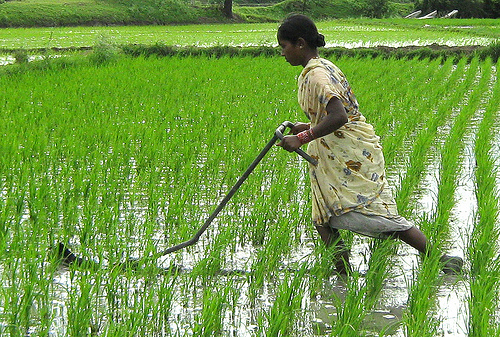
WFO Calls for Farmer-Centred Sustainable Development
LIVINGSTONE, Zambia, May 09 (IPS) – Over 600 delegates representing at least 570 million farms scattered around the world gathered in Zambia from May 4-7 under the umbrella of the World Farmers’ Organisation (WFO) to discuss climate change, land tenure, innovations and capacity building as four pillars on which to build agricultural development.
Among the local delegates was Mary Nyirenda, a farmer from Livingstone, where the assembly was held.
“I have a 35-hectare farm but only use five hectares due to water stress. With one borehole, I am only able to irrigate limited fields. I gave up on rainfall in the 2013/14 season when I lost about five hectares of maize to drought,” Nyirenda told IPS.
Privileged to be part of the 2016 WFO General Assembly, Nyirenda hoped to learn innovative ways to improve productivity and market access for her garden and poultry produce. But did the conference meet her expectations?
(Mary Nyirenda in her garden at her farm in Livingstone, Zambia. Credit: Friday Phiri/IPS)
“Yes it has, especially on market access. I’ve learnt that working as groups gives us a strong voice and bargaining power. I’ve been struggling on my own but now I understand that two is better than one, and so my task from here is to strengthen our cooperative which is still disjointed in terms of producer partnerships,” said Nyirenda, emphasising the power of farmer organisations – for which WFO exists.
Convened under the theme ‘Partnerships for Growth’, the clarion call by delegates throughout the conference was to change the narrative that, while they are at the centre of a multi-billion-dollar food sector, responsible for feeding the whole world, farmers are the world’s poorest people.
And WFO President Evelyn Nguleka says the situation has to change. “It is true that farmers in almost all corners of the world constitute the majority poor, but the question is why?” asked Nguleka while responding to journalists during the closing WFO General Assembly Press briefing.
She said the meeting established that poor organisation and lack of information were the major reasons for farmers’ lack of progress, noting, “If farmers remain in isolation, they will continue to be poor.”
“It is for this reason that we developed a legal tool on contract farming, which will be mostly useful for smallholders whose knowledge on legal matters is low, and are easily taken advantage of,” said David Velde, president of the National Farmers Union in the U.S. and a board member of WFO.
Velde told IPS that various tools would be required to help smallholders be well equipped to fully benefit from their work, especially in a world with an unstable climate, a sub-theme that found space in all discussions at the conference due to its multifaceted nature.
With technology transfer being one of the key elements of the sustainable development agenda as enshrined in the Paris climate deal, delegates established that both innovation and capacity building for farmers to improve productivity cannot be discussed in a vacuum.
“Agriculture is indeed a global sector that needs serious attention. The fact that a world farmers’ organization exists is a sign that food production, food security, climate change are global issues that cannot be looked at in isolation. Farmers need information on best methods and technologies on how best to enhance productivity in a climate conscious manner,” said Zambian President Edgar Lungu in his address to the WFO General Assembly.
In the world’s quest to feed the hungry 793 million people by 2030, and and the projected population growth expected to reach 9.6 billion by 2050, more than half in Africa, WFO is alive to the huge task that its members have, which can only be fulfilled through increased productivity.
“WFO is in recognition that the world has two conflicting issues on face value—to feed the world and mitigate climate change. Both require huge resources but we believe that it is possible to tackle both, through increased productivity using latest technology,” said William Rolleston, president of the Federated Farmers of New Zealand.
Rolleston, who is also Vice President of WFO, told IPS that while WFO’s work does not involve funding farmers, it helps its members to innovate and forge partnerships for growth.
It has long been recognised globally that climate change, if not tackled, could be a barrier to the achievement of Sustainable Development Goals (SDGs). And this presented, perhaps, the hardest of choices that world leaders had to make—tackling climate change, with huge implications on the world’s productive capacity, which has over the years largely relied on a carbon intensive economy.
By approving the SDGs and the historic climate agreement last year, the world’s socio-economic agenda is set for a complete paradigm shift. However, WFO President Evelyn Nguleka wants farmers to remain the focus of the world’s policies.
“Whatever changes the world decides moving forward, it should not be at the expense of farmers to survive and be profitable,” she stressed.
For Nyirenda, access to markets holds the key to farmers’ productive capacity, especially women, who, according to FAO, constitute half of the global agricultural labour force, while in Africa, the figure is even higher—80 percent.
“My interactions with international organisations such as IFAD and others who are interested in women empowerment was a serious-eye opener moving forward,” she said.
Source: Inter Press Service–(May 2016)









